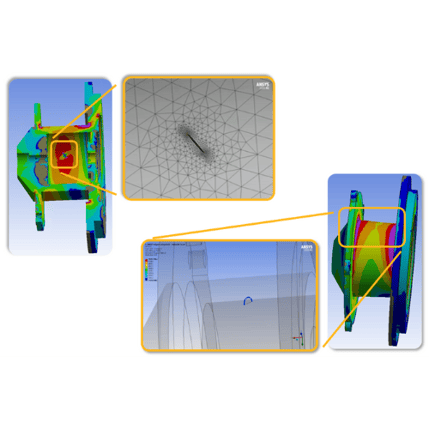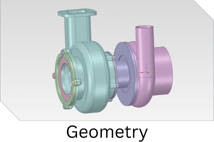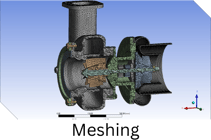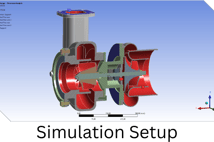Unraveling Advanced Fracture Analysis: The Role of UMM in Ansys Mechanical
Engineering simulation has become indispensable in product design and development, particularly for assessing the behavior and endurance of materials under various conditions. At the forefront of this field is fracture analysis, which plays a critical role in ensuring the safety and durability of everything from everyday tools to complex structures like bridges and aircraft.
Traditional approaches to fracture analysis have been labor-intensive, relying heavily on physical prototypes. However, the landscape has shifted dramatically with computational advancements. One such advancement is the Unstructured Mesh Method (UMM) in Ansys Mechanical, which has transformed the efficiency and accuracy of simulations by optimizing the mesh generation process.
As an elite channel partner of Ansys, Ozen Engineering brings a wealth of experience to the table in using Ansys Mechanical for fracture analysis applications. Our team's deep expertise is instrumental in harnessing the full potential of tools like UMM and SMART technology. In this blog, we aim to educate and enlighten our readers about the intricacies and benefits of these technologies in modern engineering simulations.
In the following sections, we'll explore the specifics of UMM, its integration with SMART technology, and the significant impact these are making in the realm of engineering simulation.
The Evolution of Fracture Analysis with UMM in Ansys Mechanical
 Introduction of UMM in Ansys Mechanical
Introduction of UMM in Ansys Mechanical
The Unstructured Mesh Method (UMM) in Ansys Mechanical represents a pivotal shift in engineering simulation, especially in fracture analysis. By streamlining mesh generation, a traditionally time-consuming and complex task, UMM enables quicker and more precise simulations.
What UMM Brings to the Table
UMM automates the creation of an all-tetrahedral (tet) mesh, ideal for analyzing fractures. Traditional meshing required a delicate balance between detail and computational practicality, often demanding extensive time and expertise. UMM simplifies this, adeptly handling complex geometries and intricate crack patterns.
Notable Advantages of UMM
- Automatic Tetrahedral Mesh Generation: UMM excels in generating tetrahedral meshes, essential for modeling intricate geometries and crack details.
- Significant Reduction in Preprocessing Time: UMM drastically cuts down the mesh generation time, transforming days of work into mere minutes, thus accelerating the overall simulation process.
- High-Quality Results: UMM combines speed with precision. The quality of its mesh rivals the traditionally preferred hex mesh, ensuring accurate fracture analysis.
UMM's Impact in Engineering
UMM in Ansys Mechanical responds to the demand for more efficient, accurate simulation tools. By enhancing mesh generation, it not only saves time but also democratizes high-quality fracture analysis, essential in industries where safety and material integrity are critical, like aerospace, automotive, and civil engineering. The upcoming sections will delve into how UMM's integration with SMART technology further amplifies its capabilities in simulating crack growth.
Enhancing Fracture Analysis with SMART Technology
UMM and SMART: A Synergistic Advance in Ansys Mechanical
The Unstructured Mesh Method (UMM) in Ansys Mechanical is significantly enhanced by its integration with Separating Morphing and Adaptive Remeshing Technology (SMART). This combination offers a comprehensive approach to tackling the challenges in simulating crack growth in engineering.
Understanding SMART
SMART technology is tailored to simulate crack growth and fracture mechanics more effectively. It dynamically adapts the mesh in response to crack evolution during simulations, capturing the real-time behavior of materials under stress and the progression of fractures.
UMM and SMART: A Dynamic Duo
- Adaptive Remeshing: As cracks evolve, SMART, in conjunction with UMM, automatically remeshes the affected area. This ensures the mesh remains optimal for accurate simulation, regardless of changes in the crack's geometry.
- Enhanced Simulation Efficiency: UMM's automated mesh generation, coupled with SMART's adaptive remeshing, significantly streamlines the simulation process, reducing manual intervention and time required.
- Improved Accuracy and Reliability: SMART's dynamic mesh adjustment around the evolving crack front ensures continuous simulation accuracy, crucial for reliable material behavior predictions and structural integrity assessments.
- Ease of Use: This integration simplifies the setup and execution of fracture simulations, allowing engineers to focus more on result analysis and less on the complexities of mesh generation and adjustment.
Impact of UMM and SMART Integration
This synergistic integration in Ansys Mechanical is a major leap forward in engineering simulation. It not only simplifies fracture analysis but also elevates the accuracy and reliability of the outcomes. This advancement is especially valuable in sectors where precise material behavior under stress is vital for safety and performance. The following sections will explore the specific advantages of UMM in engineering simulation, highlighting its transformative impact on the industry.




Technical Insights into UMM in Ansys Mechanical
Understanding UMM's Functionality
UMM revolutionizes fracture analysis in Ansys Mechanical through its sophisticated approach to mesh generation and adaptation.
- Automated Tetrahedral Mesh Generation: UMM excels in creating a tetrahedral mesh automatically, ideal for intricate geometries and detailed fracture analysis. The method employs advanced algorithms to discretize space around crack fronts accurately, ensuring the mesh is sufficiently refined to capture stress concentrations and crack dynamics.
- Dynamic Adaptation to Crack Propagation: In synergy with SMART technology, UMM continuously adapts the mesh in response to the evolving state of the crack, maintaining simulation accuracy throughout the process.
Comparing UMM with Traditional Methods
- Hex Meshing: Hex meshing, once favored for its precision in modeling stress concentrations, is often laborious and expertise-intensive, particularly for complex geometries. UMM offers a time-efficient, automated alternative without compromising accuracy.
- Extended Finite Element Method (XFEM): XFEM, known for its ability to handle crack discontinuities, can be computationally demanding and complex for large-scale applications. UMM provides a simpler, more scalable solution.
 UMM's Advantages Over Conventional Approaches
UMM's Advantages Over Conventional Approaches
- Efficiency and Scalability: UMM streamlines the setup of fracture simulations, saving time and effort, making it a more scalable option.
- Accessibility and User-Friendliness: The automation of complex meshing processes makes UMM more accessible to engineers across various expertise levels.
- Versatility: UMM's ability to handle diverse geometries and crack patterns enhances its applicability across multiple industries and scenarios.
In essence, UMM's technical prowess marks a significant step forward in engineering simulation. It presents an efficient, accurate, and user-friendly alternative to traditional meshing techniques, empowering engineers to perform sophisticated fracture analyses with greater ease.
Summary and Future Perspectives
The integration of the Unstructured Mesh Method (UMM) into Ansys Mechanical heralds a new era in engineering simulation, especially in fracture analysis and crack growth simulation. This innovation addresses key industry challenges by combining efficiency, accuracy, and user-friendliness, paving the way for transformative approaches in material failure analysis.
With UMM, the once time-consuming process of meshing is significantly streamlined, enabling faster and more iterative design and testing cycles crucial in fast-paced industries like aerospace and automotive. This efficiency does not sacrifice accuracy; UMM's performance is comparable to traditional methods, with the added benefit of dynamic adaptation through SMART technology for consistent accuracy and reliability.
Beyond technical prowess, UMM's integration into Ansys Mechanical enhances accessibility, opening up advanced simulation capabilities to a wider range of professionals. This democratization of technology is pivotal in driving innovation and ensuring safety across various sectors.
At Ozen Engineering, we recognize the potential of UMM in pushing the boundaries of material analysis and product design. As experts and elite channel partners of Ansys, we are committed to keeping pace with such advancements, ensuring that our clients and partners benefit from the latest in engineering simulation.
Engage and Learn with Us
For those keen to explore deeper into fracture mechanics and the capabilities of Ansys Mechanical, we extend an invitation to our upcoming webinar: Fracture Mechanics: Theory and Applications.
Nov 9, 2023 12:25:38 PM
